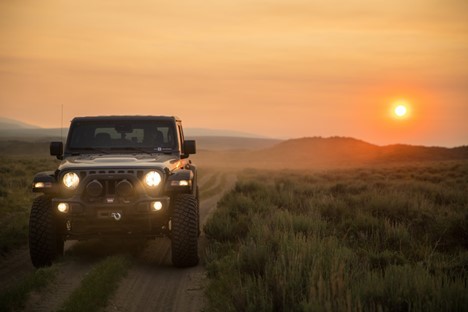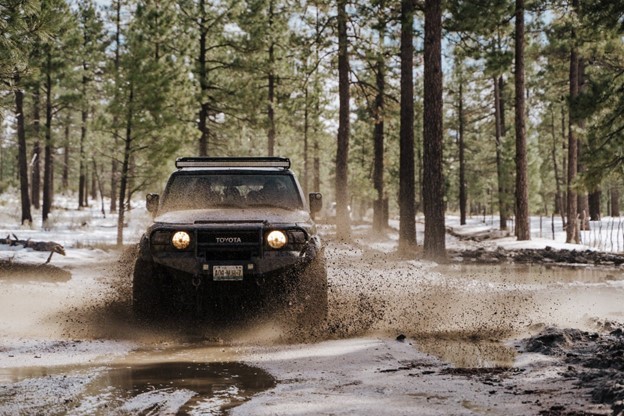 Owning a 4 wheel drive is fun and exciting. At the same time, it can also become frustrating. The latter is especially the case if you aren’t prepared for your off-road adventure, and you don’t know your vehicle well. This is common among new drivers, which can make a supposedly epic trip a nightmare.
Owning a 4 wheel drive is fun and exciting. At the same time, it can also become frustrating. The latter is especially the case if you aren’t prepared for your off-road adventure, and you don’t know your vehicle well. This is common among new drivers, which can make a supposedly epic trip a nightmare.
Read on and we’ll share tips to maximize your 4-wheel drive’s adventure potential. The more you know about your vehicle, the easier it is to make the most out of it.
1. Know the Features of Your 4 Wheel Drive
A good off-road vehicle is equipped with the best features that will make driving fun but safe on different terrain conditions. While it can vary from manufacturer to manufacturer, you must be aware of the built-in features that will come in handy in various situations. Below are the most useful features in a 4-wheel drive:
- 4WD Low: Choose this setting when you need brute force instead of speed. This is best when you are climbing vertically, towing heavy objects, or descending steep hills.
- 4WD High: It’s recommended for high-speed driving, especially if you’re at 25 mph and above. This can provide additional traction when the terrain isn’t steep. When driving on snow, ice, mud, and rocks, this is a good setting.
- Traction Control: This is an automated system that prevents the wheels from slipping, making it one of the best features in a 4WD. Such a setting comes in handy when you are driving on slippery surfaces, such as snow and ice.
- Locking Differential: In a normal situation, the wheels of the vehicle turn at different speeds to compensate for the conditions of the terrain. Meanwhile, with a locking differential, the wheels will be turning at the same speed, which is handy when you’re stuck.
2. Invest in the Right Accessories
Go for form over function when looking for accessories for your 4WD. It’s impractical to spend on something that does more than just enhancing the aesthetics unless you have the budget to spare.
Durable rooftop cargo carriers are amongst the best accessories you can have. It helps increase the storage capacity of your vehicle, so more people could fit comfortably inside. Plus, rooftop carriers allow you to stay organized.
A bull bar is another functional accessory you might need. It protects the front of your 4×4 from damages in case of a collision. Even better, it can help promote the safety of those inside a vehicle.
Meanwhile, if you have enough space and if you’re on the road for a long time, investing in a fridge can also be a good idea. It gives you access to cold beverages when you need them while also keeping food fresh during your trip.
3. Inspect Your4 Wheel Drive Before You Leave
Hitting the open road and going on an epic trip is exciting, but this shouldn’t be an excuse for you to forget about inspecting your vehicle. Inspection is crucial for off-road safety. This is an opportunity to identify any potential problems and fix them before they can make your trip a nightmare.
Tires are among the first ones to check not only for safety but also for fuel efficiency. Ensure that they have the right air pressure. See to it as well that they are rotated. Most importantly, always bring a spare tire.
Don’t forget to check the battery as well. A dead battery can be a headache, especially when there is no way to jump start it in the middle of an empty road.
Check all fluids, ensuring they are filled as needed. You must have enough transmission fluid, coolant fluid, power steering fluid, and wiper fluid, among others.
The lights should also be in excellent condition. Especially if you’re leaving during the day. Test all the lights, so you’re sure that they’ll work once it turns dark.
4. Watch Out for the Weight
One thing that many four-wheel drive owners ignore is their cargo weight. Many may end up overloading their vehicle, especially when towing. However, such can be an unsafe practice. Not to mention, it can also reduce your fuel efficiency and impact comfort.
The more the vehicle weighs, the more stress there will be in its components. This can affect the motor, chassis, and other parts. Plus, it can make it difficult to climb challenging terrains and increase the possibility of sliding.
Check the maximum weight capacity the manufacturer states. Going beyond such will not only put you at risk but can also void the vehicle’s warranty.
5. Scope the Route
There’s something inherently exciting in driving on unfamiliar roads. However, this may end up being unsafe, especially if you’re an inexperienced driver. It’s common for many off-roaders to end up shocked after knowing that the terrain is more difficult than what they can handle.
A good way to prepare for your outdoor adventure is to check Google Earth. You can also go online to look for aerial photos or read about the experiences of other people. By doing so, you’ll be more aware of the road conditions. Hence, you can prepare for the drive accordingly.
Another reason why you should scope the route is to know the water conditions. If you must cross any body of water, make sure to test or know the water depth. Don’t simply drive without knowing if your vehicle can handle the depth.
6. Know the Off-Roading Etiquette
Trail driving may not have official rules, but that does not mean that you can do as you wish. It’s crucial that you’re mindful of the environment and those around you. Below are the most important things to keep in mind:
- Slow down and give way to hikers, bikers, and even horses. Do not honk your horn or blast dust. Instead, reduce your speed and yield right of way.
- Leave plenty of space to move. Don’t be too close on the vehicle in front of you, especially when navigating difficult trail conditions.
- Pull out of the trail if you wish to make a complete stop. This is especially important to do if you’re on a busy road.
- Read the signs and stay out of places you’re not allowed to enter. These can include wilderness or protected areas.
- Avoid being too aggressive. Every move should be calculated to minimize the risk and stay safe on the road.
7. Prepare for the Worst-Case Scenario
A lot of things can happen during your off-road adventure. The best thing to do is to prepare. This will minimize headaches on your trips while also making sure that you and your passengers stay safe. Here are some things you need:
- First Aid Kit: This is a non-negotiable in your 4WD. Pack one that comes with basic medicines and supplies that you can use when there’s an emergency.
- Glass Breaker and Seatbelt Cutter: No one wants it to happen, but you might end up stuck in your car without a way to get out. It would help if you had something to cut the seat belt or break the glass in an unfortunate situation.
- Fire Extinguisher: A small fire extinguisher will be more than enough. Attach one on the cab for easy access so you can extinguish fire before it becomes devastating.
- Food and Drinks: You might end up being stuck in the middle of nowhere during your road trip, so it’s best if there’s something to keep you full and hydrated.
Wrapping Up
Photo by Josue Michel from Unsplash
Even if you feel like the king of the road driving a 4 wheel drive, it isn’t an excuse to go unprepared. Knowledge is power, so you must know the dos and don’ts of four-wheel driving. From investing in the right accessories to knowing the trail etiquette, take note of the things mentioned above for the best off-road adventure!










